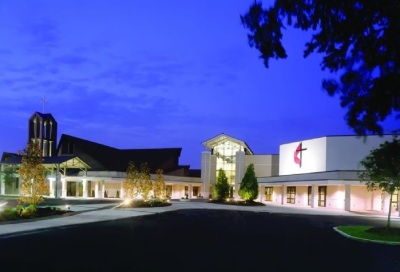Exiting United Methodism now

An old friend phoned yesterday to say his large downtown church had just voted to disaffiliate from United Methodism by a 96% congregational vote. I was very surprised, having visited there years ago when the pastor was very institutionalist. He said the current pastor is robustly orthodox. My friend, who previously served on the board of a national United Methodist agency, which had made him cynical about the denomination, said he now felt he had his church back.
It’s time for Methodists to get their churches back, and I’m not just referring to traditionalists, conservatives and evangelicals. Everyone who’s tired of control and manipulation by the dysfunctional and bloated bureaucracy of a dying denomination must take advantage of this opportunity to liberate their congregation.
United Methodist properties are owned by the denomination. But the 2019 Conference ratified an exceptional law, expiring next year, allowing churches to vote themselves out of the denomination. They retain their property and pay two years worth of apportionments plus clergy pension liabilities. One church member recently told his pastor that their amount equals what he spends on a new truck, which he considered a bargain. (Sadly, some resentful bishops, like expiring vampires before the dawn, are adding exorbitant surcharges, which for some churches may require litigation.)
Yes, liberation from an imploding denomination is a bargain at almost any price. USA United Methodism is dying. It’s lost 5 million members and as of 2020 was losing 200,000 members annually. The pandemic, during which thousands of churches closed for much of if not more than a year, and the unfolding schism will dramatically accelerate this loss. The average age for United Methodists is near 60 and climbing. USA United Methodism is over 90% white and incapable of reaching non-whites and immigrants. United Methodism has almost no capacity to plant successful new churches. Instead, it closes hundreds of churches annually.
United Methodism has an unsustainable 1960s bureaucracy built for a church that had 11 million in the USA but now has 6 million. It spent $114 million in 2020 on its national bureaucracy including $60 million on church agencies and nearly 20 million on bishops plus $14 million on education, mainly seminaries. How does this huge bureaucracy serve the local church? The seminaries, agencies and most USA bishops ignore Methodist historic and official beliefs. Instead they focus on self perpetuation, revisionist theology and politics. They have no interest in evangelism, reversing 58 years of continuous church decline, or meaningfully helping local churches.
There are also the wasteful bureaucracies of the annual conferences and local districts, sustaining nearly 50 USA bishops and hundreds of district superintendents. What do they do for local churches and the Gospel? And United Methodism has nearly 40,000 clergy who are guaranteed nearly lifetime employment regardless of competence. They are mostly not trained in sound Methodist doctrine or evangelism. The seminaries marinate them in identity politics and revisionist theology irrelevant and often destructive to local churches. Many of these clergy are themselves victims, having been instructed in a false reality by their seminaries, boards of ordained ministry and bishops.
Of course, thousands of clergy minister faithfully, sacrificially and effectively, for which they are often sidelined or punished by the bishops and church bureaucracy, who resent their success and fidelity to official doctrine. Thriving pastorates are often replaced by successors who reject orthodox teaching and extinguish the fruit of their predecessors.
In this vein, dying USA United Methodism ignores if not disdains lessons from growing churches in other communions and even growing United Methodist churches in Africa. Our denomination is proudly content to die.
There’s no reason anybody who wishes well for their local United Methodist church should wish to stay affiliated with the dying denomination that hangs about their necks like an albatross. Why pay thousands if not tens or even hundreds of thousands annually to a destructive bureaucracy extolling causes against Methodist teaching? Why be subject to a bishop who does not share your beliefs or even wish you well? Why allow your property to remain hostage to an unreliable denomination that has the power to seize your property and close your congregation? Why allow your pastor to be imposed on you by an outside force without regard to fidelity, competence or suitability?
If your congregation leaves United Methodism by next year’s deadline under paragraph 2553 you will own your church property, have authority over your next pastoral appointment, no longer subsidize the United Methodist bureaucracy, and be able to plan for a hopeful future. You can join the new Global Methodist Church, or any other denomination. You can remain independent, though I hope you don’t. You can work to proclaim the Gospel without interference from a dying denomination.
Americans care less and less about denominations. Old multigenerational loyalties to denominations are largely over. Church goers now expect churches to earn their loyalty. Exiting dying United Methodism will empower congregations to meet this expectation.
Mostly traditionalists, conservatives and evangelicals are exiting United Methodism. But anyone who cares about competence, accountability and hope for the future should exit. Begin the process now. Time is short. United Methodism as a sprawling USA 1960s bureaucracy is dying. But Methodism as a movement, unchained from that expiring behemoth, can now anticipate some of its best days.
Originally published at Juicy Ecumenism.
Mark Tooley became president of the Institute on Religion and Democracy (IRD) in 2009. He joined IRD in 1994 to found its United Methodist committee (UMAction). He is also editor of IRD’s foreign policy and national security journal, Providence.




























